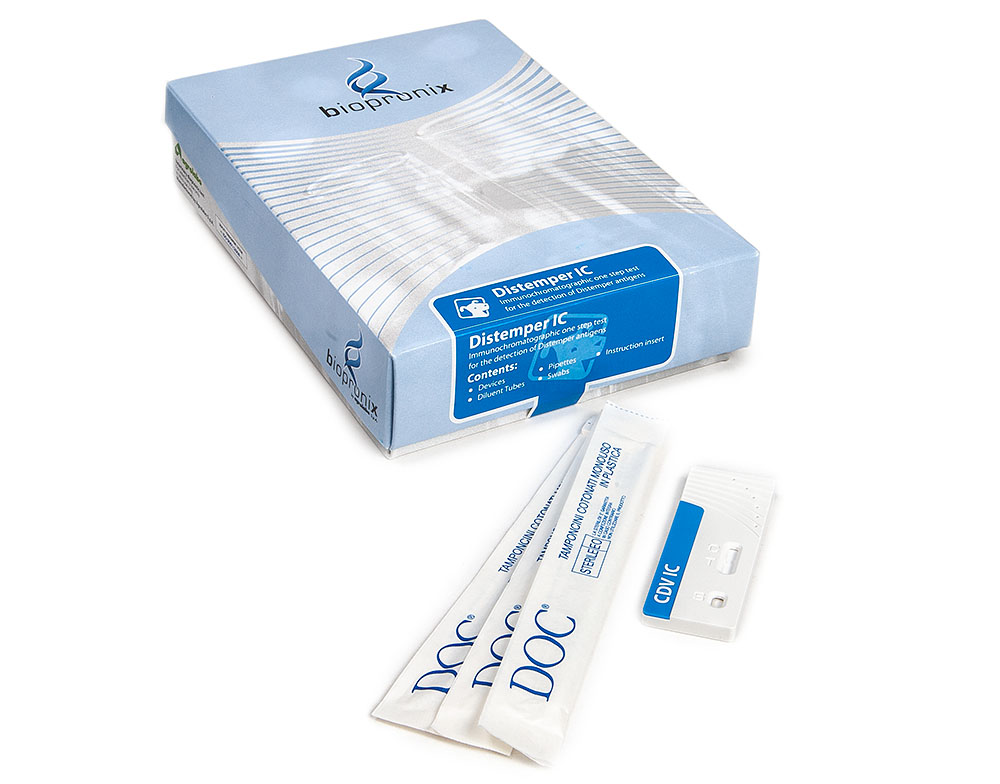Distemper IC
Rapid test for the detection of Canine Distemper Virus antigen
Distemper IC is an immunochromatographic test for the detection of Canine Distemper Virus (CDV) antigen in nasal and conjunctival secretions of dogs
Distemper is a systemic disease that affects dogs and other wild canids.
The aetiological agent is a morbillivirus (Canine Distemper Virus – CDV) of the family Paramyxoviridae.
The virus particularly affects puppies, regardless of breed. It is present all over the world and is particularly widespread in the cities, dog colonies and in general wherever dogs are in contact with each other.
Although the virus is contagious, it shows a poor environmental resistance because it is sensitive to UV rays, heat, desiccation and is rapidly inactivated by common disinfectants.
The virus is transmitted by direct contact, inhalation and transplacental route. The virus is excreted in the faeces and secretions in the acute phase of the infection and localizes in the nervous system, eyes, skin and lungs.
The symptoms are variable and can affect the respiratory, digestive and nervous system.
Mortality can reach 50%, especially in young and unvaccinated animals.
Distemper is an insidious disease: the symptoms that distinguish it, taken individually, lead back to simple common and not very serious pathologies. The first symptom is generally fever.
The virus causes serious respiratory, gastroenteric, dermatological and neurological problems at a more advanced stage of the disease.
– Respiratory problems: nasal discharge, cough, respiratory distress
-Digestive problems: gastroenteritis with vomiting and diarrhea
-Skin problems: dermatitis, nasal and foot pad hyperkeratosis
-Nervous system problems: convulsions, muscle spasms up to limbs paralysis
-Eye problems: conjunctivitis with ocular drain
Following transient leukopenia induced by viral infection, secondary bacterial infection normally manifests as leukocytosis. The transient drop in white blood cells further weakens the immune system and as a result the sick puppy is exposed to secondary infections that complicate the clinical picture.

